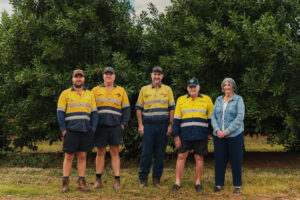
What is tree nut allergy?
A nut allergy means the immune system mistakenly thinks the protein in nuts is harmful and commences an allergic reaction in a misguided attempt to protect the body from the ‘invader’. Nut allergy requires specialist medical diagnosis and treatment because allergic reactions can be serious and life-threatening. Consultation with an Immunologist and an Accredited/Registered Dietitian who specialises in food allergy is recommended. It is not uncommon to be allergic to several types of nuts, but it is also possible to be allergic to only one type of nut and be able to eat other nuts without any problem.
The only treatment for food allergy is avoidance
If a person is allergic to a nut – or any other food – they must avoid eating it. Even tiny amounts can trigger a reaction that can be life-threatening. In the case of tree nuts, once the particular nut allergen(s) has been determined, it is possible to eat other types of nuts, but it’s recommended to consume them in their shell to avoid possible cross contamination.
How common is tree nut allergy?
Tree nuts include almonds, Brazil nuts, cashews, chestnuts, hazelnuts, macadamias, pecans, pine nuts, pistachios and walnuts.
Australia has one of the highest rates of food allergy in the world59 and tree nut allergy is one of the most common food allergies, estimated to affect 3.1% of babies and young children60. Thankfully, allergy to macadamias is rare, estimated to cause less than 5% of all tree nut allergies26,61. While other food allergies – like allergies to eggs or milk – usually disappear by the time a child starts school, nut allergies are more likely to persist into adulthood27, with only up to 20% of children outgrowing them. A review of tree nut allergy conducted in 201562 found prevalence rates varied around the world. On average they affect less than 2% of the population but can be up to 5%. Interestingly, individual tree nut allergy also varied by region. For example, walnut allergy is most common in the UK, and hazelnut allergy is most common in Europe.
Nut allergy symptoms
The symptoms of food allergy usually occur immediately after the food is eaten and can include itching, swelling, hives, wheezing, shortness of breath, sweating, light headedness, nausea and bowel upset. In severe cases the allergic reaction can cause anaphylaxis (swelling of the throat that restricts the ability to breathe) and a sudden drop in blood pressure that can lead to organ failure. If untreated this can be fatal.
People with anaphylactic reactions to nuts are advised to carry an injector pen with a dose of adrenalin (also called epinephrine) to help them survive accidental nut ingestion, however immediate medical attention must be sought as well. They also need to be vigilant in reading food labels and ask questions at restaurants and cafes to avoid nuts in food.
Peanuts are not tree nuts
Peanuts are ground nuts not tree nuts and are classified as legumes. However, peanuts are often bundled together with tree nuts in information about nut allergy as they cause similar reactions. Peanut allergy is more common than tree nut allergy although both – including macadamia allergy – can cause severe reactions or anaphylaxis. Allergy to peanuts and tree nuts is increasing and no one is sure why. However, a large health nut study in Melbourne is looking for possible causes63.
Avoiding nuts
Common allergens such as nuts must be declared on food labels so people with nut allergy can avoid them. If the label is unclear, people with a nut allergy may need to check with the manufacturer. Families with a nut-allergic child are advised to avoid nuts at home to minimise accidental exposure. Beware of nut allergies when preparing and serving nuts, or food containing nuts, to children you don’t know (such as when your children’s friends come to visit or if you host a party).
Nuts in schools and childcare
Individual schools and childcare centres with nut-allergic children can request all children avoid bringing nuts in their lunchbox to avoid the allergic child accidentally eating nuts. However, school nut bans are not recommended by state governments as they have not shown to be effective71. They can create a false sense of security causing children to be less vigilant. Schools need Allergy Aware policies with guidance for all students. Children allergic to nuts need to learn the dangers of swapping food with friends, and their friends need to be taught not to do this in order to protect their allergic mate. The Allergy and Anaphylaxis Australia Be a Mate program is a good example of this.
Nuts during pregnancy
There is no evidence that women need to avoid eating nuts during pregnancy in an effort to reduce nut allergy unless they themselves have a nut allergy64.
Babies can eat nut pastes as first foods
A recent consensus of Australian allergy specialists has developed new guidelines for introducing nuts to infants. Nuts in the form of pastes or butters should be introduced around 4-6 months of age when the infant is ready just like any other protein foods65.
To find out more about nut allergy visit Nuts For Life.







